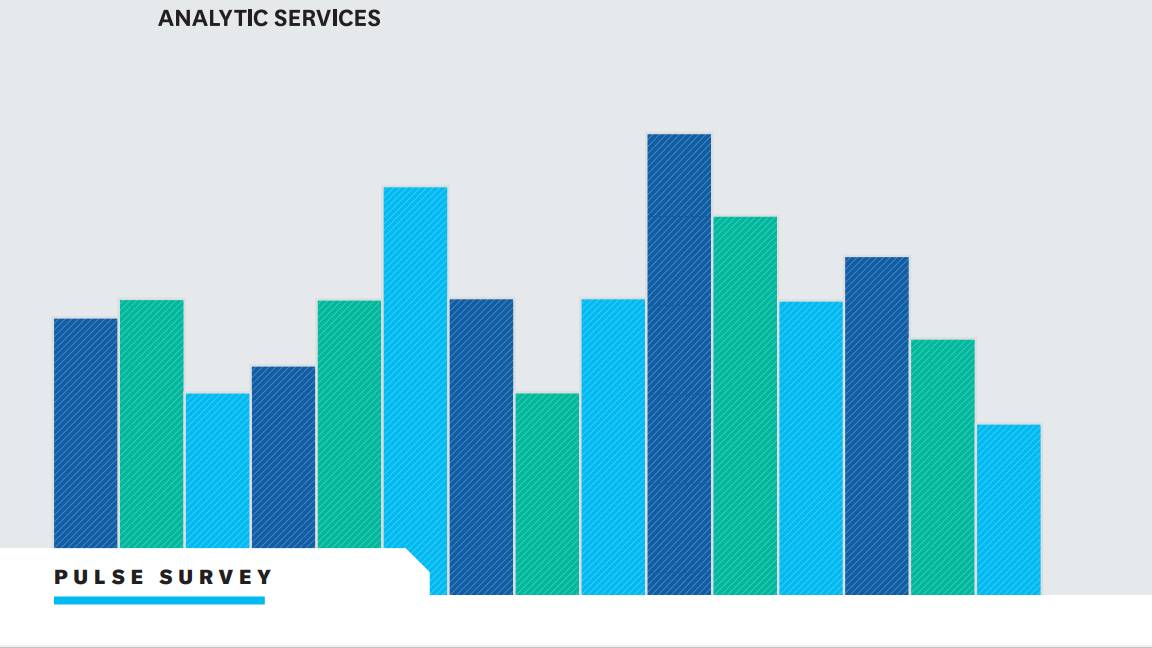Application Development challenges and opportunities in six charts
Demand for application development is at an all-time high, so what are businesses doing to adapt?


There is no doubt that the need for digital transformation dominates strategies for forward-thinking businesses. As a result, demand for application development is at an all-time high, even for organisations which aren't traditionally software-focused, meaning that speed and agility are more important than ever before.
Earlier this year, Outsystems conducted a survey of more than 3,500 IT professionals from around the world to find out how organisations' application development priorities are adjusting and adapting in the digital age, as well as the main challenges, opportunities, and strategies to overcome resource constraints and reduce backlogs.
Here, we have rounded up some of the key findings for developers and IT professionals in six charts.
When it comes to the types of applications being developed this year, apps being used directly by customers and apps supporting internal processes lead the pack. Although it is unsurprising that customer app development comes first, the proportion of projects dedicated to supporting internal operations and replacing legacy systems shows that there is still a great deal of transformation that businesses need to undergo before they can focus completely on their customers.
The survey revealed that there is a close correlation between web and mobile development times, with mobile apps taking slightly longer than web apps. What is also apparent is that organisations using low-code consistently report faster delivery speeds, particularly among those who are able to develop apps in just 1-4 months.
All organisations are looking to continuously improve the efficiency, speed and quality of software delivery, and the survey revealed that agile approaches are currently the most popular way of doing this. DevOps (development and operations) and SecDevOps (security development and operations) are also a popular way of increasing capacity, with 40% of respondents saying they had invested in it in the past year.
The top challenges complicating or delaying delivery of web and mobile applications were legacy system integrations, and having to deal with unclear or changing requirements. There were a variety of other issues, but many of the responses came under the themes of management and project management weaknesses, technical constraints of development tools, skill shortages, lack of business engagement, and security.
Get the ITPro daily newsletter
Sign up today and you will receive a free copy of our Future Focus 2025 report - the leading guidance on AI, cybersecurity and other IT challenges as per 700+ senior executives
55% of respondents indicated that their organisation had outsourced some development in the past year, for both web and mobile applications. Mid-sized organisations were the most likely to outsource development (61%), with large organisations of over 10,000 employees claiming to make the least use of outsourced development (49%).
Over a third of respondents said that a no-code or low-code development platform was currently a part of their IT strategy, with a further 9% indicating that they would start to use one soon. Of those that are using low-code, half of the organisations were using them for customer-facing portals and web applications, with many citing accelerating digital transformation and innovation as a primary reason for adoption.
Esther is a freelance media analyst, podcaster, and one-third of Media Voices. She has previously worked as a content marketing lead for Dennis Publishing and the Media Briefing. She writes frequently on topics such as subscriptions and tech developments for industry sites such as Digital Content Next and What’s New in Publishing. She is co-founder of the Publisher Podcast Awards and Publisher Podcast Summit; the first conference and awards dedicated to celebrating and elevating publisher podcasts.
-
 Meta just revived plans to train AI models using European user data
Meta just revived plans to train AI models using European user dataNews Meta has confirmed plans to train AI models using European users’ public content and conversations with its Meta AI chatbot.
By Nicole Kobie
-
 AI is helping bad bots take over the internet
AI is helping bad bots take over the internetNews Automated bot traffic has surpassed human activity for the first time in a decade, according to Imperva
By Bobby Hellard
-
 2024 State of procurement report
2024 State of procurement reportWhitepaper The trends shaping the future of business buying
By ITPro
-
 Digital optimisation paves the way to strategic supplier management
Digital optimisation paves the way to strategic supplier managementWhitepaper Procurement’s role as a strategic driver
By ITPro
-
 The small and medium business guide to buying
The small and medium business guide to buyingWhitepaper Optimising purchasing to save in 2024
By ITPro
-
 Move your organisation forward by refining your strategic procurement plans
Move your organisation forward by refining your strategic procurement plansWhitepaper An Executive’s Guide to Purchasing in 2024
By ITPro
-
 Accelerate full-stack web and mobile app development
Accelerate full-stack web and mobile app developmentWhitepaper Three tips proven to help teams build modern apps faster
By ITPro
-
 Establishing an OSPO is 'the next big evolution of the tech workplace'
Establishing an OSPO is 'the next big evolution of the tech workplace'News GitHub says having an open source programme office is essential to getting the most out of open source projects in an organisation
By Connor Jones
-
 Optimising storage infrastructure for DevOps practices
Optimising storage infrastructure for DevOps practicesWhitepaper Maintaining IT infrastructure to best support application services
By ITPro
-
 Synk to move into cloud security with Fugue acquisition
Synk to move into cloud security with Fugue acquisitionNews London firm claims deal will create industry's first cloud service posture management solution designed by and for developers
By Bobby Hellard